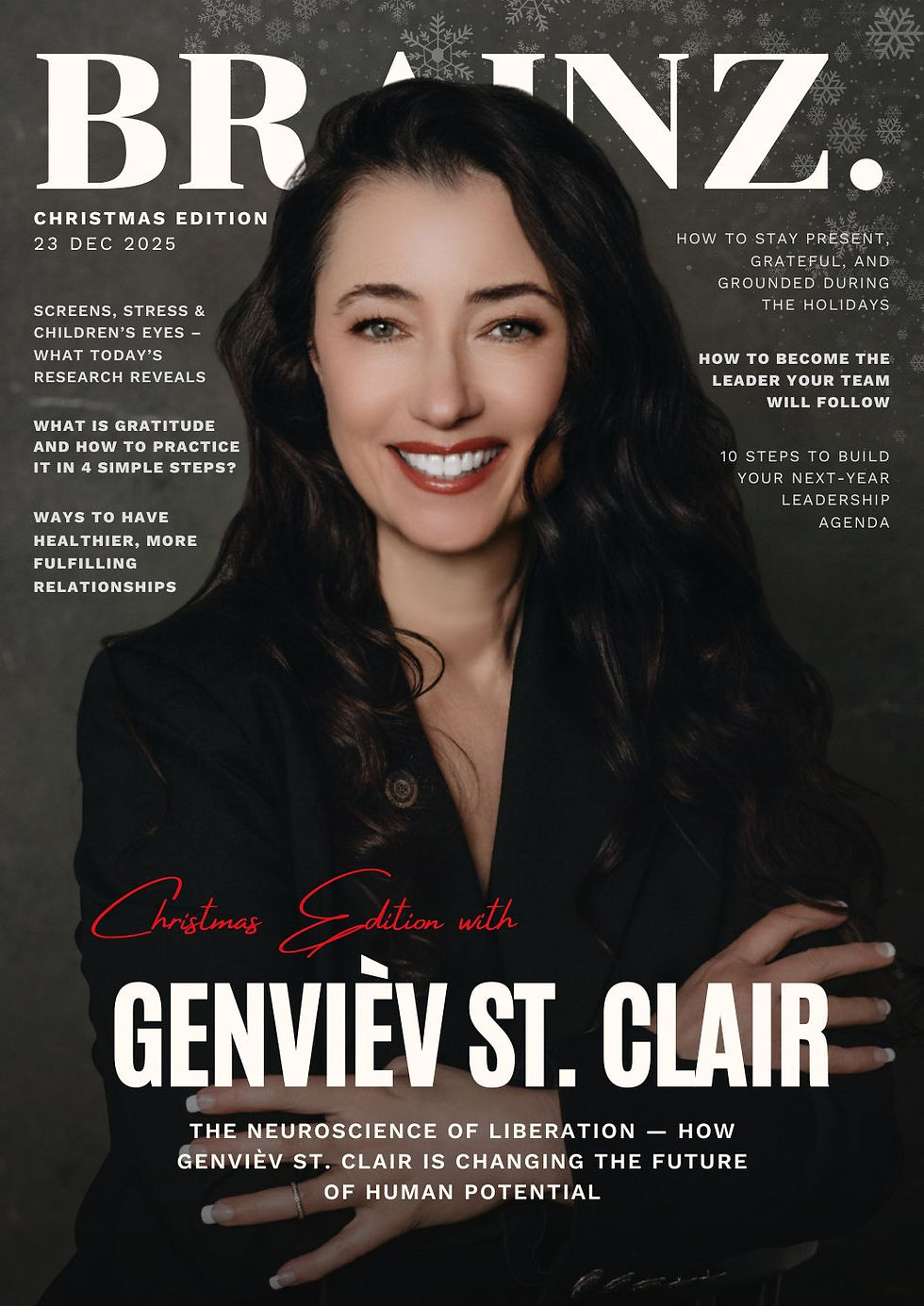The Comfort Zone Trap and Why Playing It Safe is Costing You
- Brainz Magazine

- Jun 2
- 4 min read
Written by Tan Chrissis, Speaker and Mindset Coach
Tan Chrissis is a Speaker and Mindset coach, serving as the CEO of CognitiveVerse, a platform dedicated to personal growth and cognitive wellness.

We all crave stability. That cozy, familiar bubble where things feel predictable, it’s what we call the comfort zone. But here’s the uncomfortable truth: staying too long in that bubble could be the very thing holding you back from the life you actually want.

Let’s explore why the comfort zone is more of a trap than a sanctuary and what you can do to escape it before it costs you too much.
What is the comfort zone, really?
At first glance, it seems harmless, safe, even. But beneath its surface lies the subtle architecture of limitation.
Breaking down the concept
The comfort zone is a psychological state where you operate in a routine, free of risk and stress. Think of it as cruise control, efficient but directionless. You’re not pushing your limits, and you’re definitely not growing.
How the brain reacts to the familiar
Your brain loves patterns. Familiarity equals safety, and safety means survival. That’s why discomfort feels like a threat, even when it’s actually a doorway to growth. Your brain isn’t trying to keep you successful; it’s trying to keep you alive, and sometimes that means stuck.
The allure of staying comfortable
Let’s be honest, it feels good to be comfortable. But good isn’t always great, is it?
Safety vs. growth: The internal tug-of-war
We’re wired with two competing forces: the desire to stay safe and the urge to evolve. When safety wins too often, we settle. But when growth wins, we begin to stretch and thrive.
Short-term peace, long-term regret
That Netflix binge instead of tackling your goals feels great now, but over time, those choices build a wall between you and your potential. Comfort today, regret tomorrow.
Signs you’re stuck in the comfort zone
You might not even realize it, but the signs are there.
Subtle behaviors that keep you stagnant
Saying “no” to new challenges
Avoiding feedback or criticism
Procrastinating on dreams
Prioritizing busywork over meaningful work
The “someday” syndrome
Telling yourself, “I’ll start that business someday” or “I’ll travel when the time is right”? That’s the comfort zone speaking in disguise. “Someday” is the friendliest form of self-deception.
The real cost of playing it safe
Here’s where things get real. The comfort zone might seem harmless, but the toll it takes is deep and lasting.
Missed opportunities and untapped potential
When you avoid risk, you also avoid:
New career paths
Powerful relationships
Personal breakthroughs
Life-changing adventures
Each missed opportunity is a door that slowly closes.
Emotional toll of inaction
Anxiety and resentment over time: Ironically, the longer you avoid discomfort, the more anxious you become. That unused ambition? It turns into inner tension. Resentment creeps in, not just toward life but toward yourself.
Lack of confidence and identity drift: When you don’t challenge yourself, your self-belief erodes. You start to lose track of who you are or who you could have been.
Why discomfort equals growth
It’s uncomfortable to stretch, to sweat, to fail, but guess what? That’s the good stuff.
The biology of challenge and change
When we face challenges, our brain lights up. Dopamine spikes. Neural pathways expand. It’s like going to the gym, but for your identity. That stretch zone? That’s where real change happens.
How failing forward builds resilience
Failure isn’t the enemy, it’s the teacher. Every stumble is a story. Every mistake builds muscle. Without failure, there’s no grit. Without grit, there’s no greatness.
Steps to escape the comfort zone trap
No need for a dramatic life overhaul. Start small, and start now.
Start small and stay consistent
Daily micro-challenges: Take cold showers. Speak up in meetings. Reach out to someone new. Small discomforts build resilience like reps at the gym.
Reframing fear as curiosity: Instead of “What if I fail?” ask, “What if I grow?” Curiosity opens doors. Fear slams them shut.
Create accountability and momentum
Join a mastermind. Hire a coach. Tell a friend your goals. When someone’s watching, you show up differently. Momentum begins with movement.
Comfort zone in different life areas
Let’s look at where this trap shows up the most.
Career stagnation
Staying at that job you hate because it’s safe? That’s comfort zone logic. But your best work, and your happiest life, exist on the other side of risk.
Relationship routines
Are you settling for predictability over passion? Emotional intimacy requires vulnerability. That’s uncomfortable, but also incredibly rewarding.
Health and personal goals
Whether it’s skipping workouts or not pursuing creative goals, playing it safe physically or creatively keeps you from evolving into your highest self.
The myth of security in playing it safe
Security is often an illusion, especially if it comes at the cost of fulfillment.
Change is inevitable, comfort is not
You can’t control life’s curveballs. Layoffs happen. Relationships shift. Health changes. But the mindset you build outside your comfort zone? That sticks.
Risk of regret vs. risk of failure
You might fear failure, but regret is far heavier. It lingers. It whispers, “What if you had just tried?” That’s a voice you don’t want to live with.
Conclusion: Choose challenge over comfort
Here’s the truth: your comfort zone may be keeping you safe, but it’s also keeping you small. You were made for more than maintenance. You were built for momentum.
Growth starts with a choice, not a perfect plan, not a radical leap. Just a choice to lean in instead of lean back.
So, what will you choose?
Read more from Tan Chrissis
Tan Chrissis, Speaker and Mindset Coach
Tan Chrissis is a visionary leader in cognitive wellness and personal growth. As the founder and CEO of CognitiveVerse, he has developed innovative tools to enhance mental performance and unlock human potential. Tan’s expertise spans cognitive strategies, digital innovation, and lifelong learning, empowering individuals and organizations to thrive in a fast-evolving world. Through his work, he aims to inspire others to achieve clarity, creativity, and growth.










.jpg)